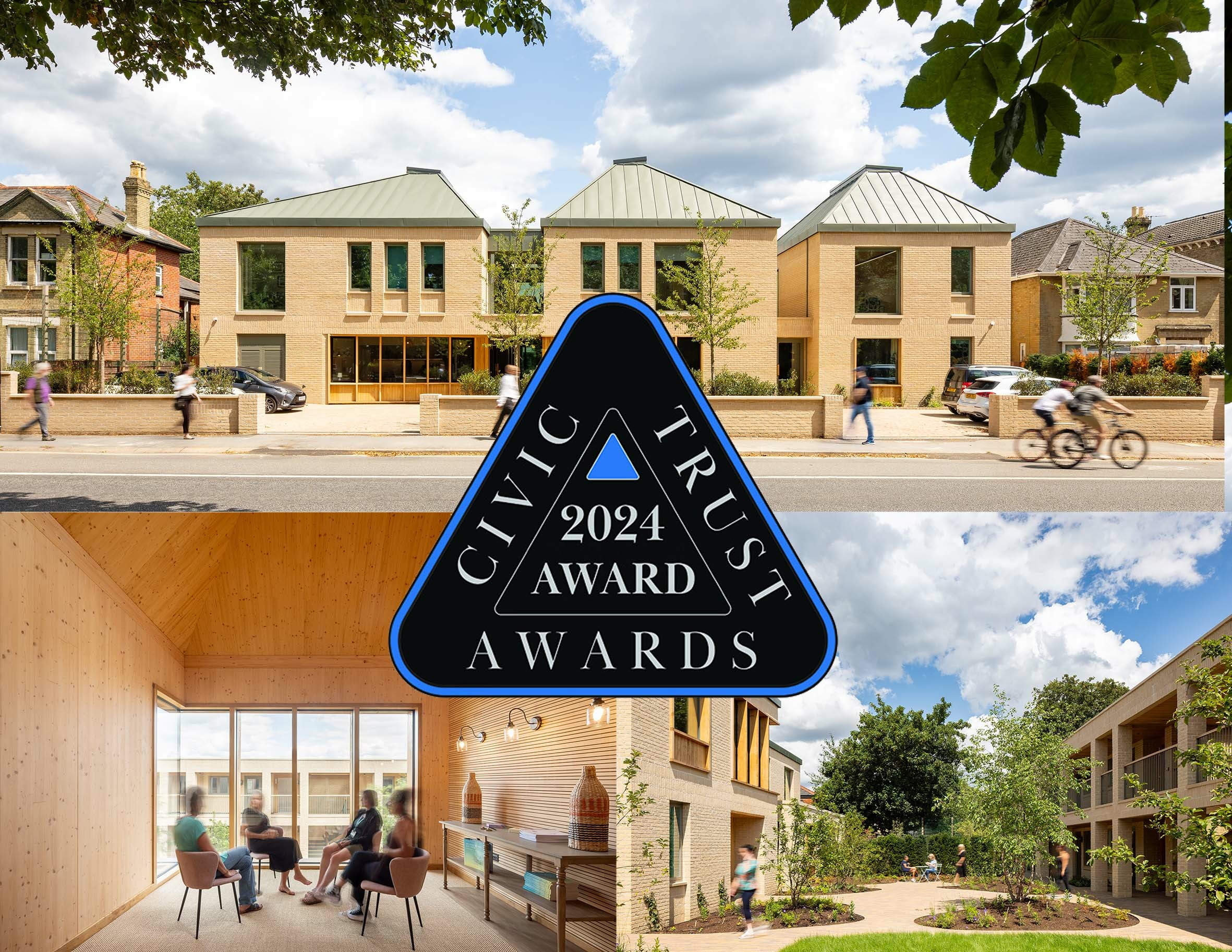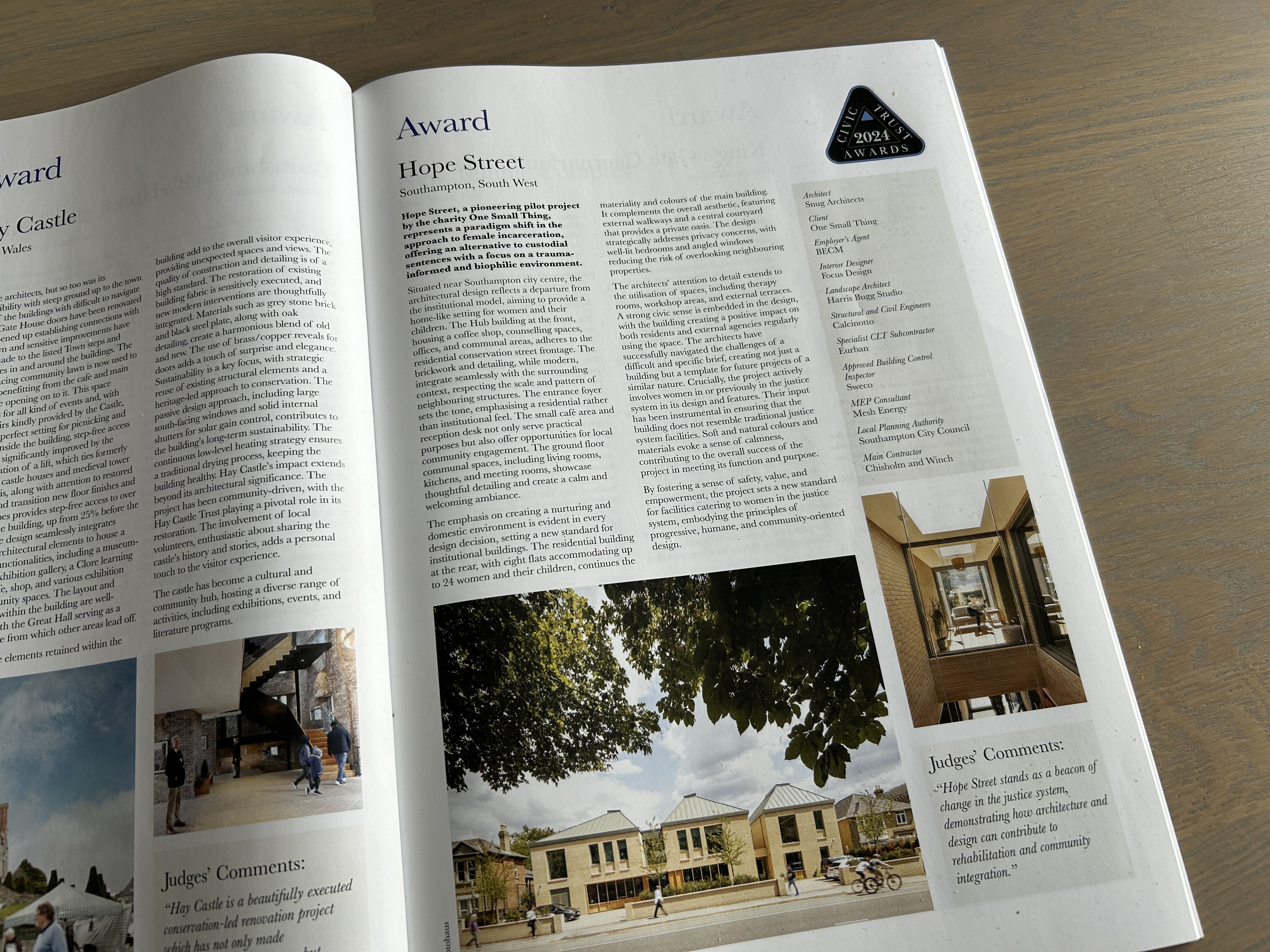Hope Street wins a prestigious Civic Trust Award

Hope Street has won another prestigious award. We were delighted to pick up an award at the 2024 Civic Trust Awards ceremony in Manchester. The judges’ commented; “Hope Street stands as a beacon of change in the justice system, demonstrating how architecture and design can contribute to rehabilitation and community integration.”.

Hope Street, a pioneering pilot project by the charity One Small Thing, represents a paradigm shift in the approach to female incarceration, offering an alternative to custodial sentences with a focus on a trauma-informed and biophilic environment.
Situated near Southampton city centre, the architectural design reflects a departure from the institutional model, aiming to provide a home-like setting for women and their children. The Hub building at the front, housing a coffee shop, counselling spaces, offices, and communal areas, adheres to the residential conservation street frontage. The brickwork and detailing , while modern, integrate seamlessly with the surrounding context, respecting the scale and pattern of neighbouring structures. The entrance foyer sets the tone, emphasising a residential rather than institutional feel. The small cafe area and reception desk not only serve practical purposes but also offer opportunities for local community engagement. The ground floor communal spaces, including living rooms, kitchens, and meeting rooms, showcase thoughtful detailing and create a calm and welcoming ambiance.
The emphasis on creating a nurturing and domestic environment is evident in every design decision, setting a new standard for institutional buildings. The residential building at the rear, with eight flats accommodating up to 24 women and their children, continues the materiality and colours of the main building. It complements the overall aesthetic, featuring external walkways and a central courtyard that provides a private oasis. The design strategically addresses privacy concerns, with well-lit bedrooms and angled windows reducing the risk of overlooking neighbouring properties.
The architects’ attention to detail extends to the utilisation of spaces, including therapy rooms, workshop areas, and external terraces. A strong civic sense is embedded in, the design, with the building creating a positive impact on both residents and external agencies regularly using the space. The architects have successfully navigated the challenges of a difficult and specific brief, creating not just a building but a template for future projects of a similar nature. Crucially, the project actively involves women in or previously in the justice system in its design and features. Their input has been instrumental in ensuring that the building does not resemble traditional justice system facilities. Soft and natural colours and materials evoke a sense of calmness contributing to the overall success of the project in meeting its function and purpose.
By fostering a sense of safety, value, and empowerment, the project sets a new standard for facilities catering to women in the justice system, embodying the principles of progressive, humane, and community-orientated design.

